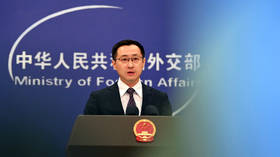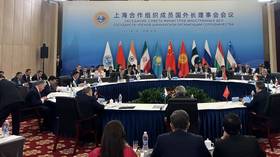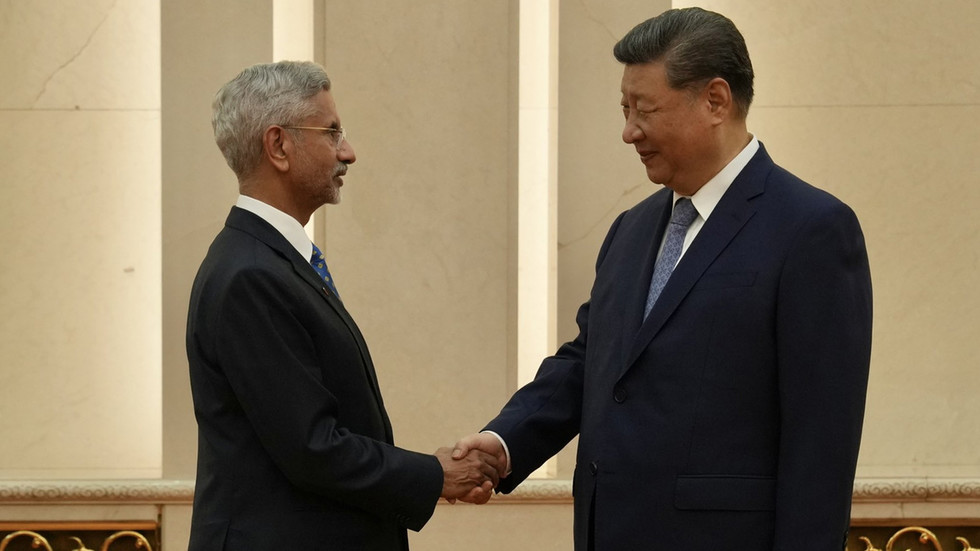China and India are cautiously dancing their way back to cooperation despite persisting difficulties
In mid-July, Indian Foreign Minister Subrahmanyam Jaishankar visited China for the first time in nearly six years, underlining a tentative yet important reset in relations between Asia’s two major powers. Jaishankar met with Chinese President Xi Jinping, Foreign Minister Wang Yi, and Vice-President Han Zheng in Beijing. Although the visit did not bring about a radical breakthrough, it did mark a significant step toward restoring top-level engagement and inching toward normalization. This effort comes at a symbolic moment – the 75th anniversary of the establishment of diplomatic relations between the two nations – and reflects a broader duality: a blend of gradual rapprochement alongside enduring strategic competition.
Jaishankar, who since 2019 has represented the moderate and pragmatic wing within India’s foreign policy establishment, continues to advocate for cooperation with China and broader engagement in multilateral institutions such as the Shanghai Cooperation Organization (SCO) and BRICS. His presence in Beijing was emblematic of India’s effort to rebalance its approach to its complex relationship with its northern neighbor.
The relevance of Sino-Indian relations extends far beyond bilateral dynamics. China and India are the world’s two most populous countries, belonging to fastest-growing economies. Both are ancient civilizations and increasingly influential actors in the rising Global South. As such, their ability to manage tensions and cultivate areas of cooperation carries profound implications for regional and global order.
Recently, there have been meaningful achievements in the bilateral relationship. Political dialogue and high-level engagement have resumed, contributing to greater border stability through new measures. Exchanges in various sectors and regional connectivity initiatives have intensified. Economic interdependence remains strong, and coordination between the two countries in multilateral platforms such as the SCO and the United Nations has become more robust.
A landmark event occurred in October 2024, when Chinese President Xi and Indian Prime Minister Narendra Modi met in Kazan. This meeting marked the beginning of a new phase of engagement. Notably, the positive trajectory of relations was not disrupted by the India-Pakistan conflict in May – a testament to the growing political will on both sides to deepen ties.
Economic interaction also continues to flourish. In 2024, China reclaimed its position as India’s top trading partner, surpassing the United States after a two-year hiatus. Bilateral trade reached $118.4 billion, a 4% increase from 2023. These figures underscore a deepening interdependence that provides both leverage and incentive for sustained dialogue.
From Beijing’s perspective, the deterioration in relations over the past few years is seen as abnormal. Chinese officials have consistently promoted the idea of improvement across multiple dimensions. India is frequently described in Chinese discourse as a fellow ancient Eastern civilization, and the bilateral relationship has been metaphorically referred to as the “dragon-elephant tango,” a symbolic framing that seeks to capture the potential harmony between the two powers.
China sees India as an indispensable actor in the Global South and advocates for a bilateral relationship that is not directed against any third party – mirroring the same language used in reference to China’s strategic partnership with Russia. Both China and India promote the vision of a multipolar world, multilateralism, and economic globalization. In this context, parallels are drawn between Xi’s vision of “a community with a shared future for mankind” and Modi’s concept of “Vasudhaiva Kutumbakam” (“the world is one family”), which is rooted in ancient Indian philosophy and emphasizes harmony and interconnectedness. The Chinese-launched Global Civilization Initiative also seeks to revive pre-modern cultural frameworks and plurality of civilizations, aligning conceptually with similar trends in India.
During his meetings in Beijing, Jaishankar reiterated India’s principle of strategic autonomy and its independent foreign policy – an approach that resonates with China’s own diplomatic posture. He described India and China as development partners rather than rivals, countering dominant Western narratives that frame China-India relations largely through the lens of competition and threat.

The triangular dynamic involving the US complicates the picture. Current pressures from Washington – particularly the shared risk of a trade war and the volatility of US foreign policy – act as a common concern for both New Delhi and Beijing. India, China, and other BRICS nations are facing increased scrutiny from the White House and NATO Secretary General Mark Rutte, who have threatened secondary sanctions over continued economic ties with Russia. These external pressures may inadvertently bring China and India closer together, as both seek to safeguard their strategic autonomy and development trajectories.
Historically, the US has sought to exploit gaps between India and China in a bid to prevent closer cooperation. That strategy may be less effective in an era where both Beijing and New Delhi are increasingly conscious of the need to define their relationship on their own terms.
Despite these positive trends, substantial challenges remain. Chief among them is the unresolved boundary dispute, which remains the most sensitive and complex issue in the bilateral relationship. The Galwan Valley clash in 2020, which resulted in around two dozen fatalities, caused a severe deterioration in ties. However, the June 2025 visit of Indian Defense Minister Rajnath Singh to China signaled a renewed willingness to seek a permanent resolution.
Trade-related frictions also persist. India faces restrictions on the import of rare earth magnets from China, which are crucial for strategic and industrial sectors. Intermittent Chinese export controls disrupt Indian manufacturing and deter Chinese foreign direct investment. Conversely, India restricts Chinese investment citing national security concerns, has banned several Chinese apps, and conducted raids on Chinese companies.

Geopolitically, the competition for regional influence continues to strain relations. China’s growing presence in South Asia and the Indian Ocean clashes with India’s strategic interests, especially in countries like Bhutan, Nepal, Pakistan, and Sri Lanka. India has consistently refused to join the Belt and Road Initiative (BRI), largely due to its opposition to the China-Pakistan Economic Corridor (CPEC), which runs through contested territory. Plans for massive infrastructure projects such as the construction of the world’s largest dam on the Yarlung Zangbo river, which flows into India, remain points of tension.
To move beyond these obstacles, it is essential to build a stable and effective border trust mechanism. Restoring strategic dialogue platforms and enhancing multi-level security cooperation are indispensable steps toward creating a mature and resilient bilateral relationship. What is required is long-term, sustained, and measurable interaction supported by enduring political will, pragmatic consultative frameworks, and – above all – mutual respect for each other’s core interests.
At a more practical level, the two countries could reconsider the potential of the China-Nepal-India Economic Corridor (CNIEC). Proposed by Beijing in 2018 and backed by Kathmandu, the CNIEC envisions greater connectivity and economic integration across the Himalayan region. Though India has so far rejected the proposal, revisiting it could offer shared economic and strategic benefits.
Another concrete step would be the restoration of military exercises, which were launched in 2007 but suspended after 2019. Renewed military cooperation would enhance strategic trust and transparency. Additionally, greater coordination in hydro-political domain is vital. Seven major rivers originate in China’s Xizang region and flow through India. This creates both risks and opportunities for the two nations.
While a full normalization of China-India relations may still be distant, the latest developments point toward a cautious but real shift. In a global context marked by uncertainty, polarization, and geopolitical realignment, the two Asian giants have much to gain from pragmatic engagement and mutual respect. The dragon and the elephant may still step on each other’s toes, but their carefully choreographed tango is once again underway.
Read the full article here
